6–7 minutes
While it is important to listen to the longer interviews on this website, for those who do not have that kind of time, the short clips shared below cover a few specific issues raised by the Narmada Bachao Andolan (NBA). They provide a quick and easy reference for important topics such as the lands of the adivasis acquired for project staff colony, the Kevadia Colony now being diverted to the Statue of Unity related tourism; the challenges that women oustees face in rehabilitation simply by virtue of being women; or the impact of the dam on the Narmada River.
The Late Girishbhai Patel (1938-2018)
Lok Adhikar Sangh and Narmada Bachao Andolan, Ahmedabad, Gujarat
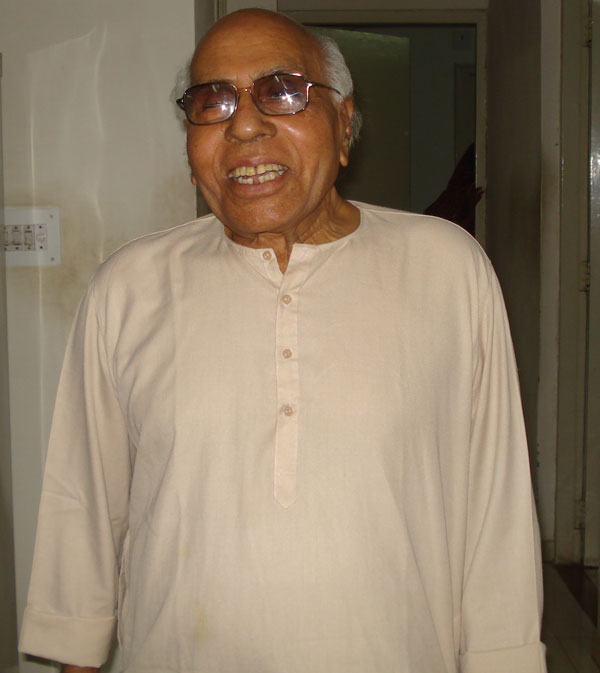
Girishbhai Patel, popularly known as the Public Interest Litigation (PIL) man of Gujarat was a renowned human rights lawyer from Gujarat and a founding member and ideologue of the NBA. In this short clip excerpted from his long interview, Girishbhai talks about how public interest litigation in itself cannot be a medium of social change. He explains its limitations and emphasizes that people’s movements should keep them in mind while filing public interest cases.
Interview Duration: 0:01:48
Language: Gujarati and English, Subtitles in English
In this second short clip of Girishbhai, he talks about the issue of the lands originally acquired for the Sardar Sarovar Project staff colony, the Kevadia Colony, now being diverted and used for tourism purposes. Kevadia Colony has now been renamed Ekta Nagar and is home to the world’s tallest statue, the Statue of Unity.
Girishbhai talks of how, in most ‘developmental projects’, more lands than required are acquired and how later these lands are used for entirely different purposes, other than those for which they were originally acquired.
Girishbhai questions the change of purpose to which the acquired lands are being put to use and argues that such lands should be returned to the oustees since they are not being used for the purpose for which they were acquired.
For more about Girishbhai and his detailed interview, please go to the “Strategies” section on the website.
It is important to note here that as the founding member of the NBA, Girishbhai raised the fundamental question- “The Narmada Project: For Whom and at Whose Cost”. These issues concerning the SSP have been written by Girishbhai and is printed in a booklet in Gujarati titled, ‘Kona Mate Kona Bhoge’, and can be accessed here.
Interview Duration: 0:02:48
Language: Gujarati and English, Subtitles in English
The Late Sitaram (bhai) Patidar
Submergence Village Kadmal, Madhya Pradesh
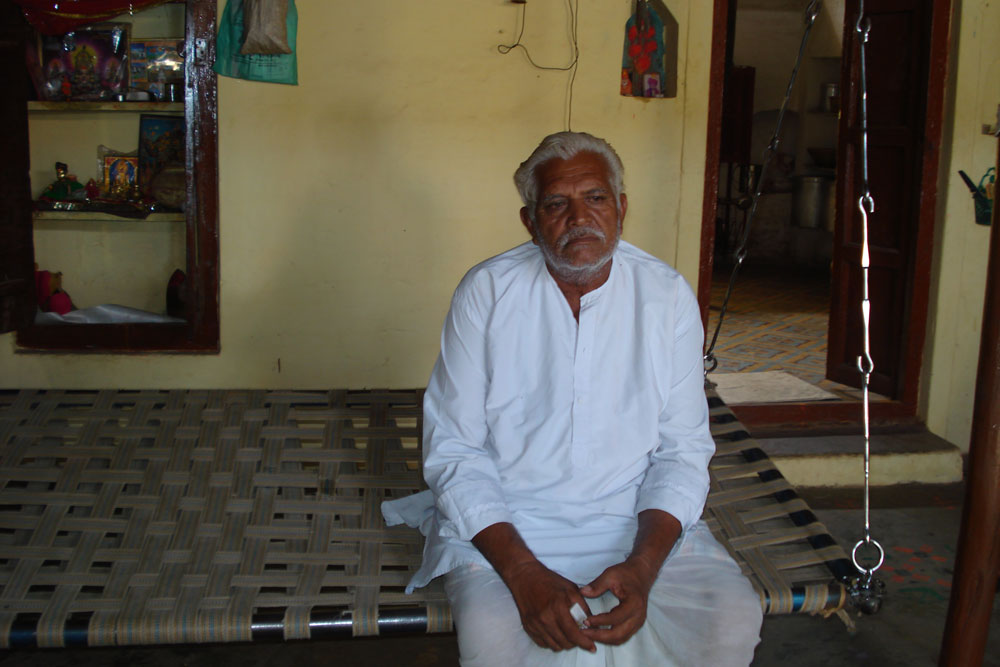
Sitarambhai Patidar was a senior leader of the NBA and a member of the Samarpit Dal, the ‘dedicated squad’ of the movement. In this clip he talks about the impact a dam has on a river and why it is important for a river to remain free flowing.
For the detailed interview of Sitarambhai on the topic, Life by the Narmada, click here
Interview duration: 0: 01:30
Language: Hindi, Subtitles in English
Pinjari (bai)
Submergence Village Sikka, Maharashtra
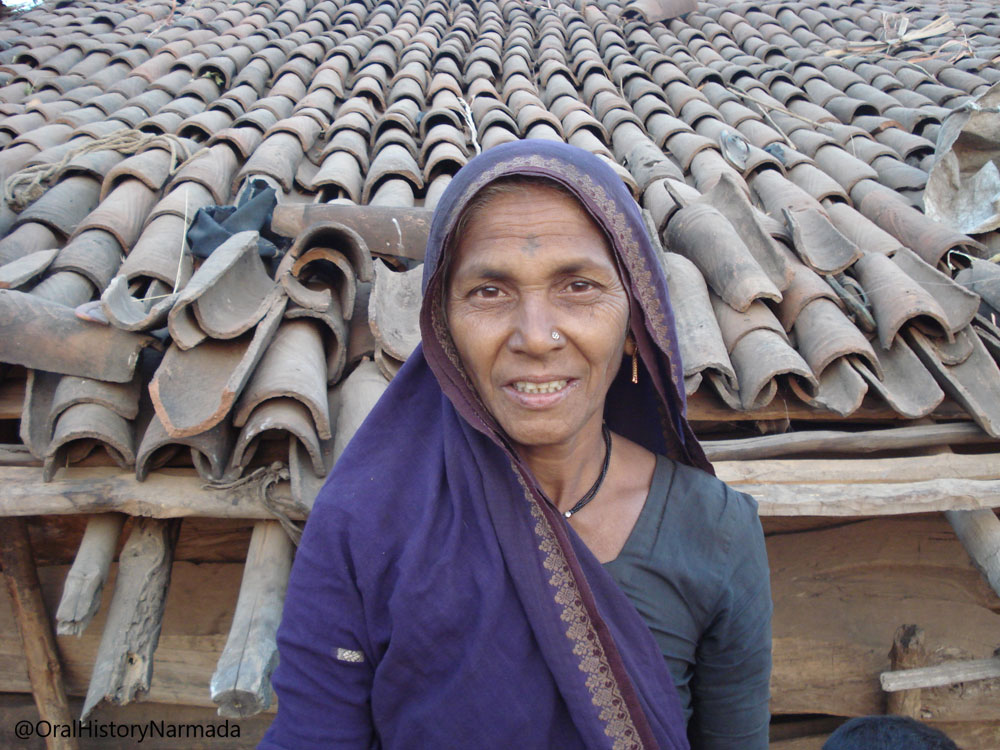
Pinjaribai, a senior woman adivasi leader of the NBA explains how women do not get same rights as the men and adult sons of land holders although they are equal contributors to the family income and welfare.
Interview duration: 0:03:00
Language: Pawari, Subtitles in English
PARASMAL (ji) KARNAVAT
SUBMERGENCE VILLAGE NISARPUR, MADHYA PRADESH (M.P.)
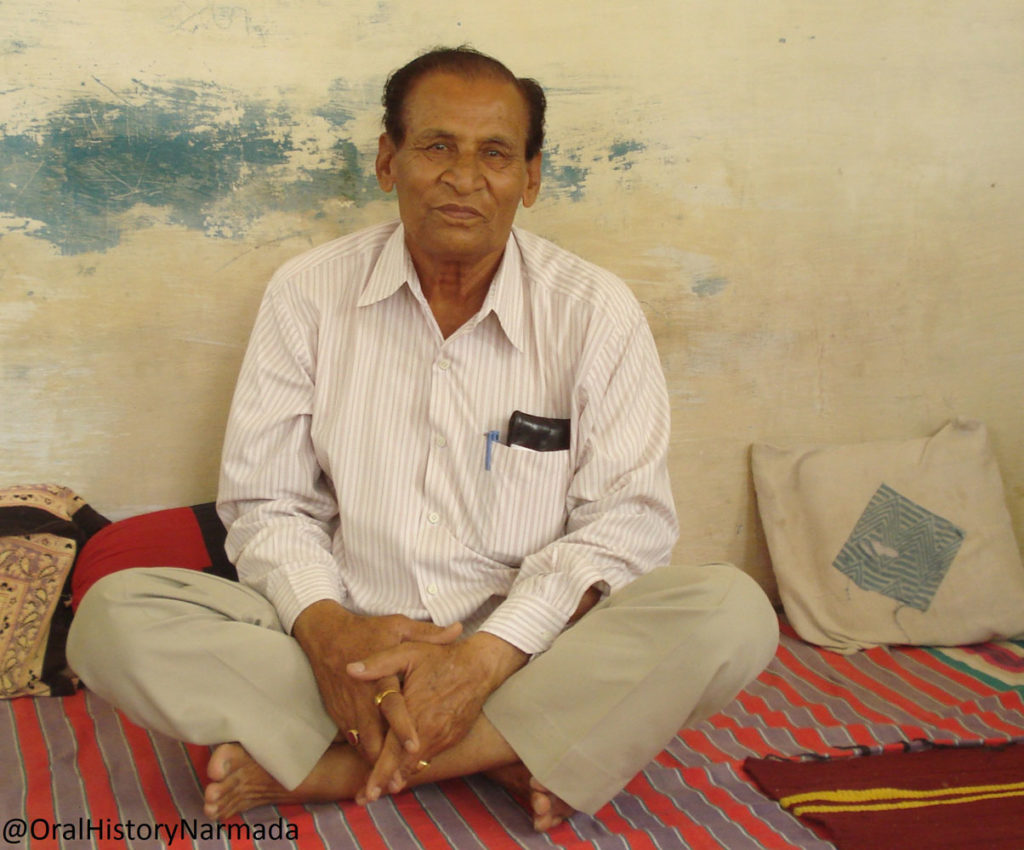
In this short clip excerpted from Parasmalji’s long interview, he talks of how in the late seventies the senior members of the Nimad Bachao Andolan challenged the inclusion of Rajasthan as a party to the Narmada Water Dispute in the Supreme Court, because it was not a riparian state. He also speaks of the response of the Supreme Court to their petition, which was argued before the court by renowned lawyer Late Shri V.M.Tarkunde.
For more about Parasmalji and his detailed interview please go to the ‘Early History of the Movement’ section on the website.
Interview duration: 0:03:53
Language: Hindi, Subtitles in English
Champa (ben) Tadvi
Submergence Village Vadgam, Gujarat
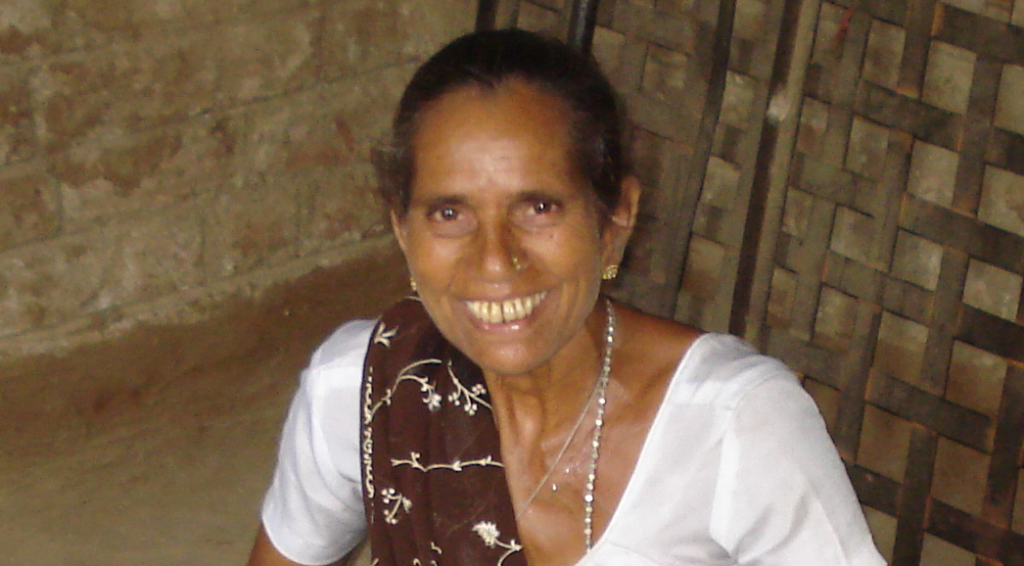
In this short clip excerpted from her long interview, Champaben who has been living in the resettlement site Dharampuri for nearly thirteen years after her village was submerged by the Sardar Sarovar dam waters, explains how and why she has never felt the Dharampuri resettlement site to be her home.
For more about Champaben’s and her detailed interview please go to the ‘Impact of Submergence’ section on the website.
Interview duration: 0:02:23
Language: Gujarati, Subtitles in English
Keshav (bhau) Vasave
Submergence Village Nimghavan, Maharashtra
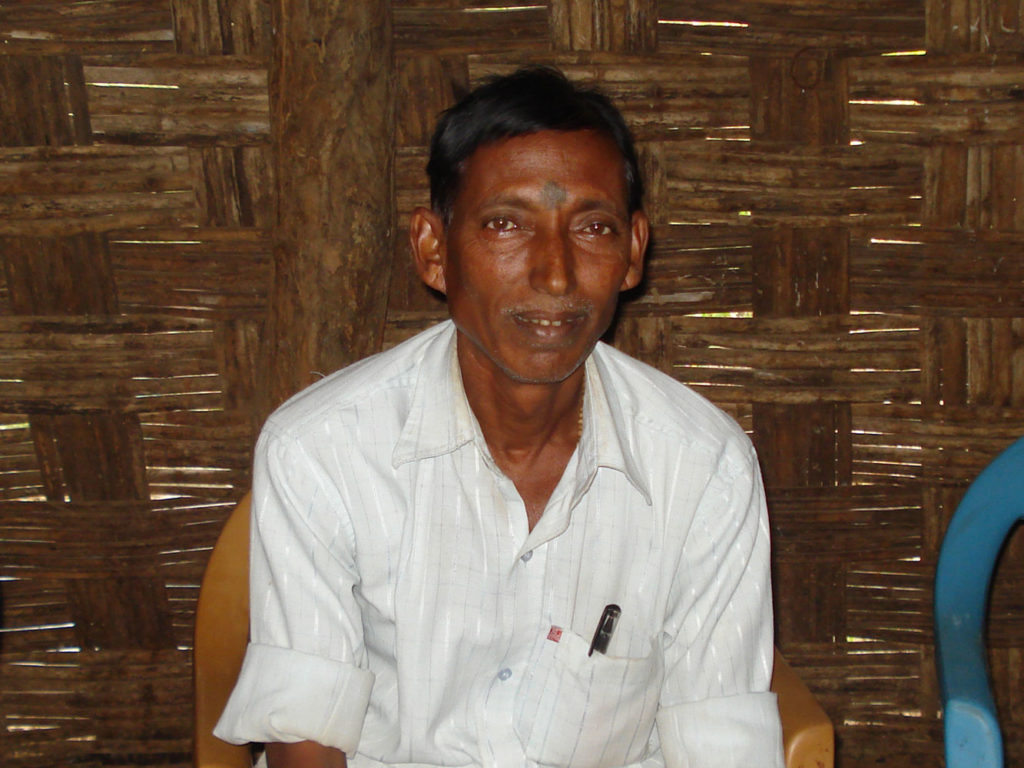
In this clip Keshavbhau talks of the irreversible impact that the damming of the River Narmada has left on the age old religious tradition of the Narmada Parikrama, the circumambulation of the river Narmada. He talks of the tradition of how thousands of parikramavasis (the circumambulators) were fed by the villagers living on the banks of the Narmada, and how he and his family served them for years. The Narmada is considered to be one of the holiest rivers, and this clip is important because it helps us understand how the Sardar Sarovar dam has disrupted the religious practices associated with the river.
Interview duration: 0:01:59
Language: Hindi, Subtitles in English
The Late Mulji (bhai) Tadvi
Senior Leader of Narmada Bachao Andolan. Village: Kevadia, Gujarat
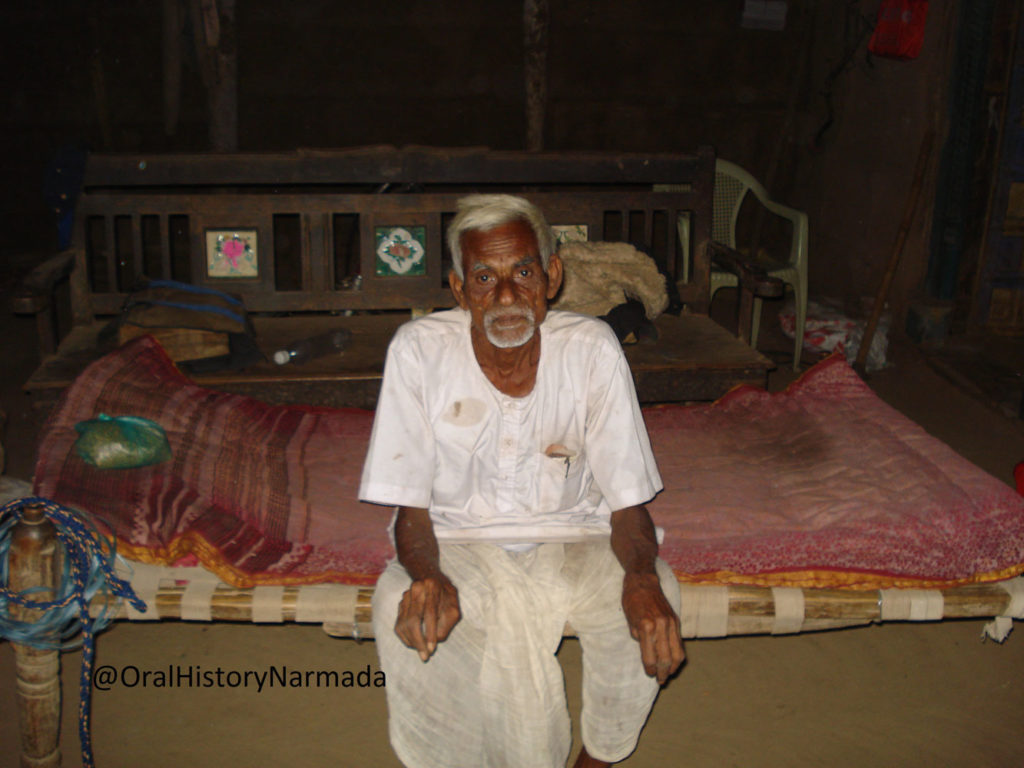
In this short clip excerpted from his long interview, Muljibhai explains the early struggle in the 1960s and 1970s when the lands of six adivasi villages, namely, Kevadia, Gora, Kothi, Limdi, Waghadia, and Navagam, were taken away from them for the construction of staff colony, named Kevadia Colony, for the then Navagam Dam which later was to become the mega Sardar Sarovar Project. He speaks of the struggle of the adivasis soon after the foundation stone for the project was laid by Pandit Jawaharlal Nehru at Navagam, Gujarat. Muljibhai was elected sarpanch of his village Kevadia five times.
For more about Muljibhai and his detailed interview on the early history of the struggle, click here
Interview duration: 0:05:18
Language: Gujarati with English Subtitles
Chaganbhai Kevat
Submergence Village: Sondul, Madhya Pradesh
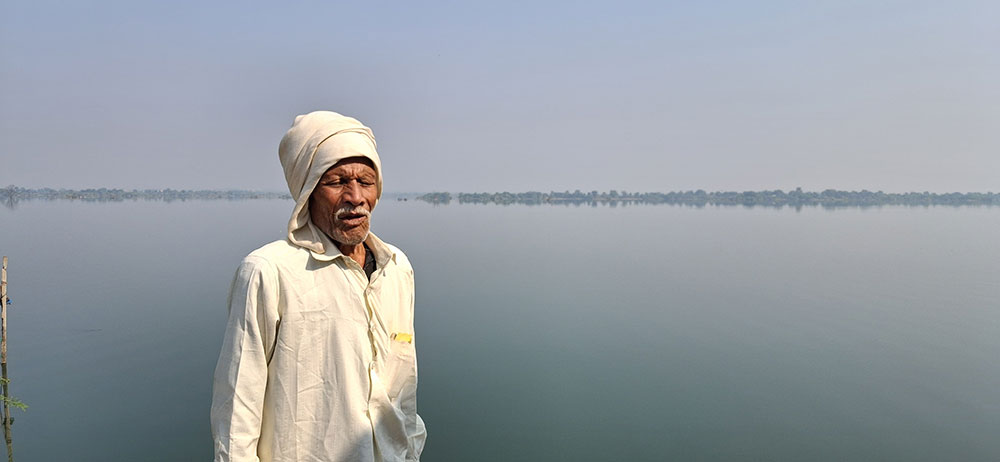
This is a short video clip of the interview taken of Chaganbhai in Nov 2024. A detailed interview done earlier of Chaganbhai in 2008 could be heard in the section, Life by The River.
Chaganbhai Kevat of Village Sondul near Badwani in Madhya Pradesh explains the number of old temples that got submerged in the Sardar Sarovar Dam waters in his village and how the government has not relocated a single one. This is the case in most of the 245 villages that submerged on the banks of the holy River Narmada when it was dammed by the mega dam named after Sardar Patel in Gujarat. Hundreds of historical temples including the most revered and many even considered swayambhu like the Shulpaneshwar, remain submerged in the dam waters. The Statue of Unity, world’s tallest statue of Sardar Patel, faces the dam now, a dam that has left unimaginable destruction of historical, religious, archaeological, cultural and spiritual sites in the Narmada valley. The Sardar Sarovar dam has also submerged the age old route of the Narmada Parikrama, the circumambulation of the river done by thousands of Hindus on their spiritual journey of one of the holiest rivers in India, revered as Goddess Narmada, now turned into a reservoir, a stagnant water body at several places along its way due to series of dams built on the river and its tributaries .
Interview duration: 0:01:40
Language: Hindi, subtitles in English
Girdhar (Guruji) Pawara
Sardar Sarovar Project Affected
Resettlement site Vadchil/ Shibhanagar, Maharashtra
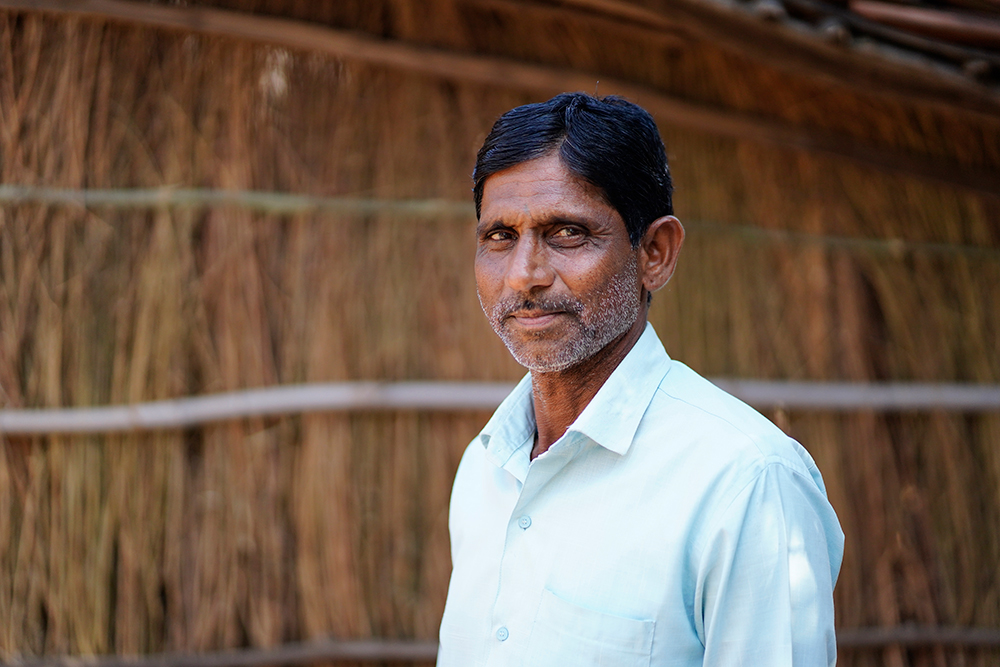
This clip is about listing the indigenous varieties of medicinal herbs and plants in the submergence villages and forests of the Narmada valley drowned by the Sardar Sarovar Dam.
This listing is by Girdhar Guruji, a founding member of Narmada Jeevanshalas/ schools and an adivasi leader of the NBA. With his immense knowledge and skills, Girdhar Guruji at one point became one of the driving forces in overseeing the working of all Jeevanshalas. So respected is he as a teacher that now, people far and near know him as Girdhar Guruji (teacher).
Girdhar Guruji was keen that the children in the Narmada Jeevanshalas learn about the traditional medicinal herbs found in the Narmada Valley before their villages and forests submerged due to the Sardar Sarovar Dam.
It is important that there is a record of the indigenous herbs and medicinal plants as per the memory of the people and this knowledge remains, particularly because the government has failed to complete the studies of the medicinal plants, herbs and roots in the submergence zone of the Sardar Sarovar Dam.
Interview duration: 0:02:10
Language: Marathi and Pawari, with subtitles in English